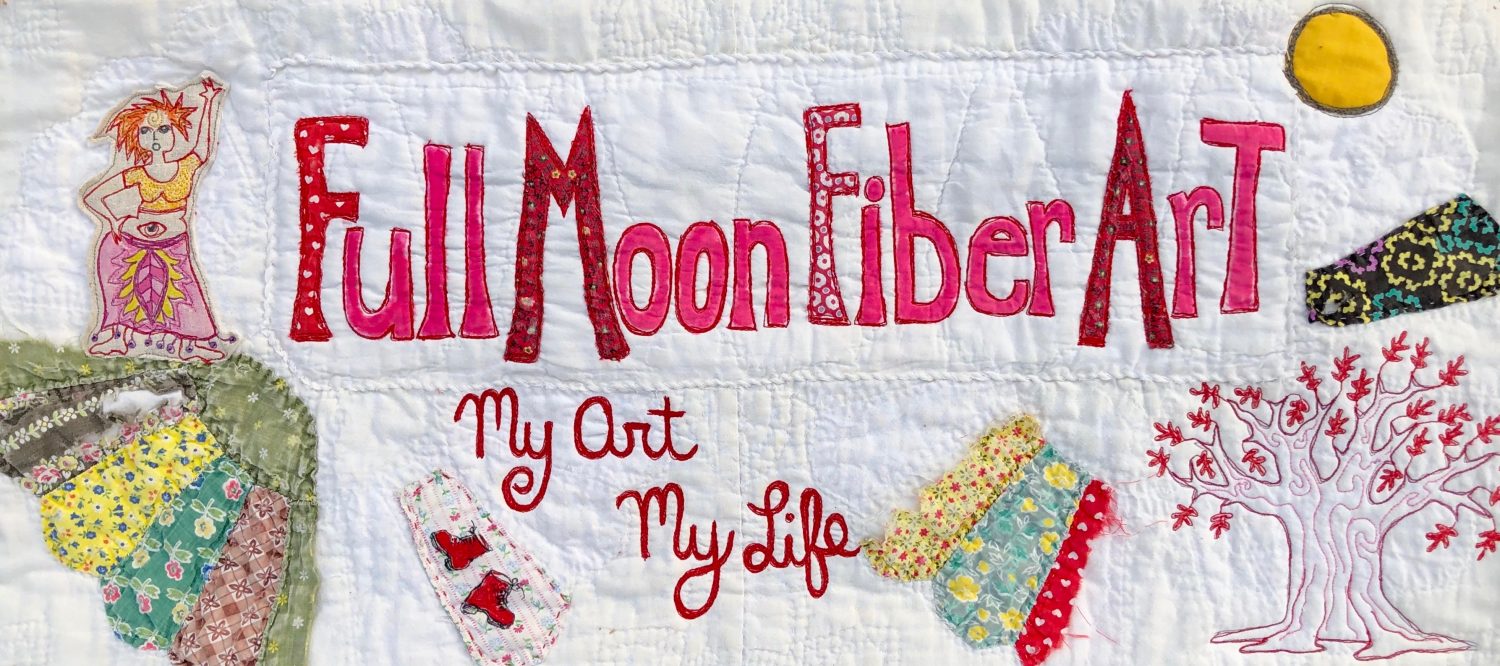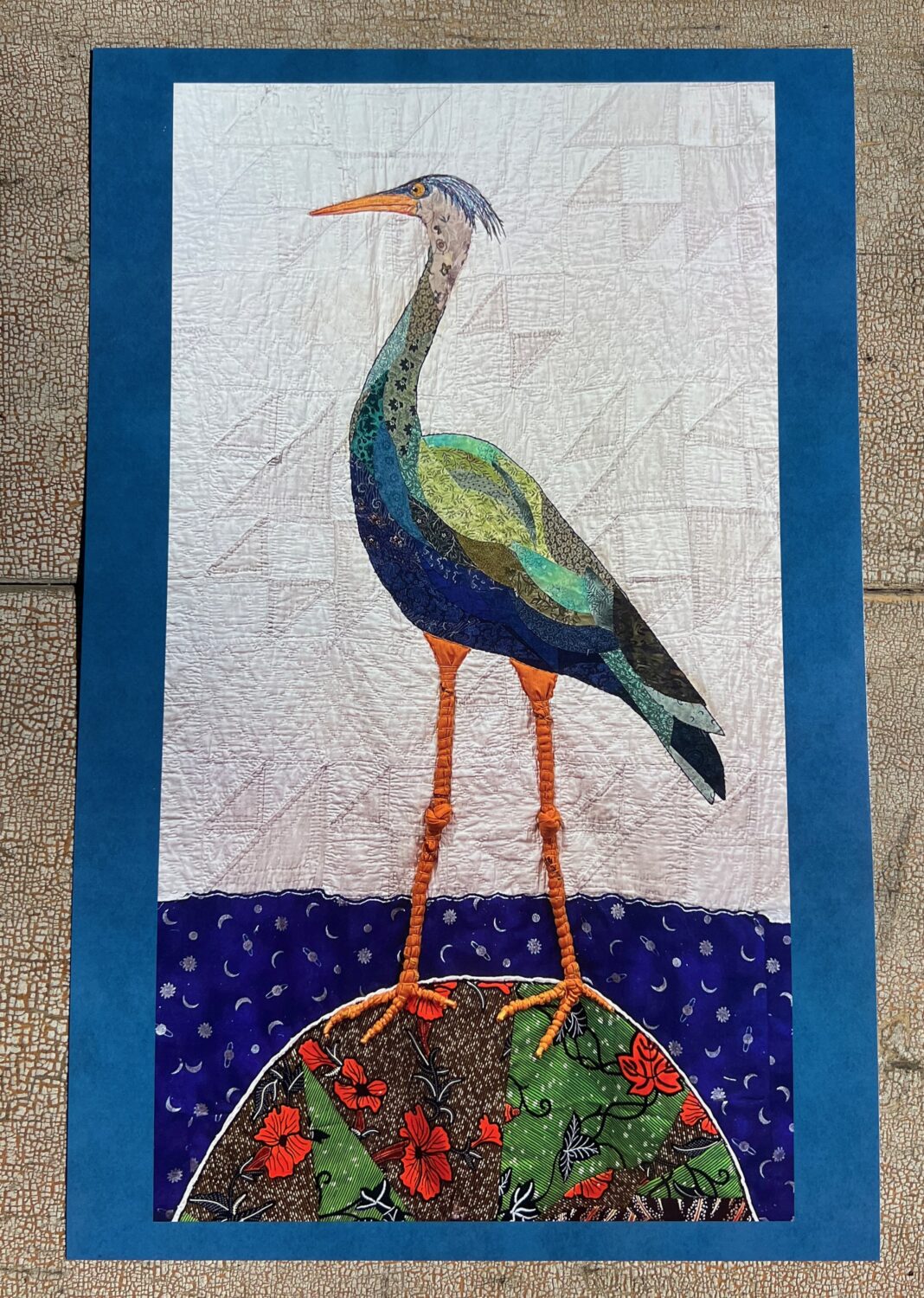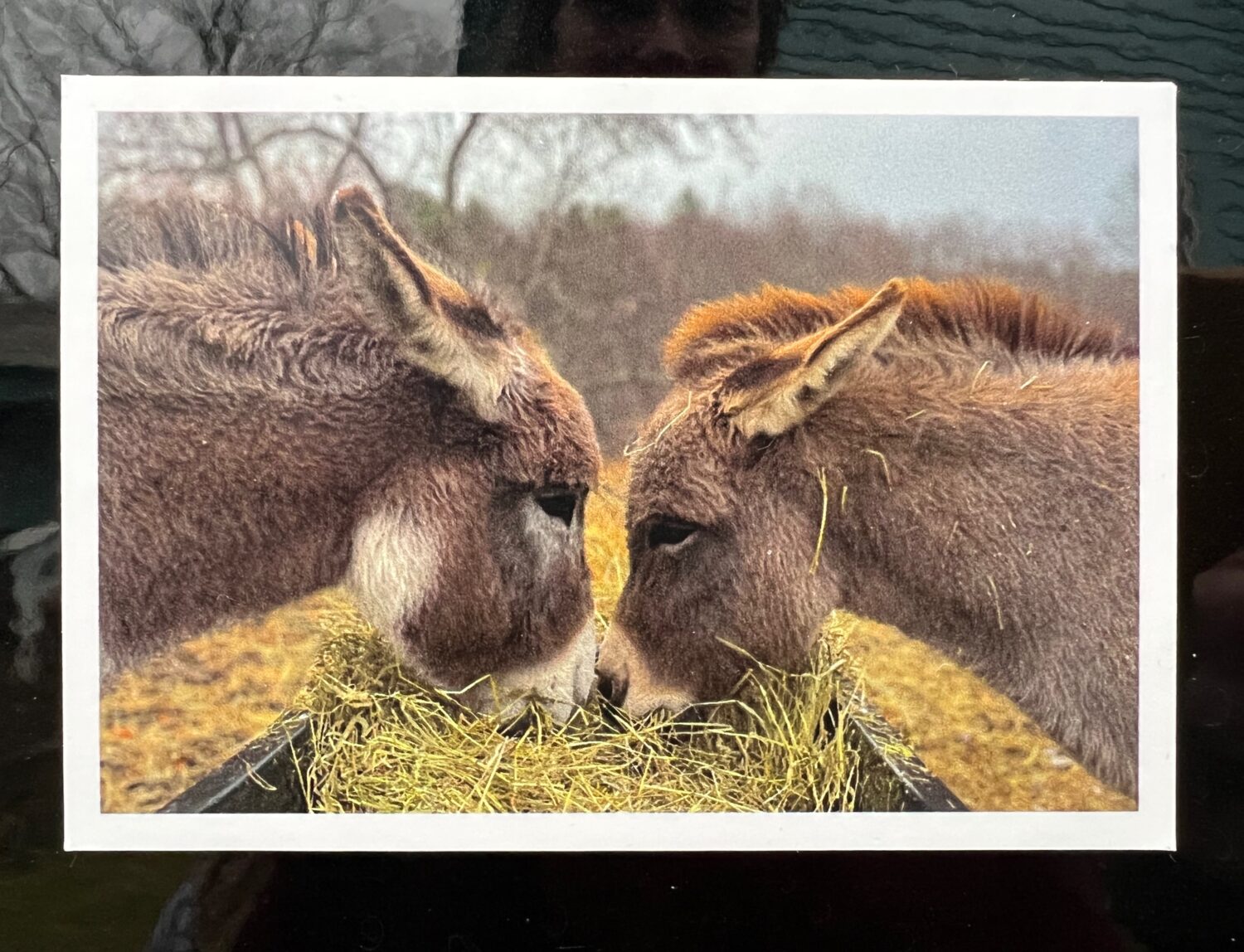
A traditional Amish quilt, blue and black, with a star pattern, covered the kitchen table. Lena told me it was hers.
I don’t know if it’s the same in every Amish family, but with our neighbors, each girl gets three quilts when they leave.
“Where will you go?” I asked Lena. “I’ll stay here,” she said. “But when I’m twenty-one, I get paid for my work.” Although she didn’t say it I got the feeling her status would change as she passed into adulthood.
I looked at the silver band on the ring finger of her right hand and asked if she’d get married. “Probably someday, “she said easily as if she had no plans one way or the other.
The big high ceiling room was hot from the wood cookstoves and filled with the smell of baking bread. The house was humming with activity. Lena’s sisters Fanny and Barbara were making lunch. Jon was talking to Moise and his wife Barbara about ordering pie plates. Their dog Tina came in the open door, greeted Jon and me then ran back out.
A very little girl, wearing a faded black bonnet and the same style dress as the rest of the girls, stood barefoot in the doorway curiously watching us. She’s the same girl I saw a few days before but then she was with a little boy the same size as her. Each was carrying a stick and marching around the yard in some kind of game.
Fanny came over smiling. She told me that this was Lena’s third quilt and the next one they made would be for her.
Each girl gets to choose the colors and pattern they want and all the women in the family help make it. This summer they’d have a barn raising and while the men were working on the barn, the women would do the hand quilting. Lena thought they might even do it outside if the weather was good.
They’d stretch the quilt on a frame and with about ten women and girls quilting they’d have it done in a day.
At one point, without acknowledging that he was interrupting our conversation, Moise asked his daughters a question from across the room about the pie plates they were trying to order. Without hesitation, the girls stopped what they saying and doing and went to where their father was, eager to help. It didn’t surprise me, I had seen this kind of expectation from my own father and many other men. As if their needs were more important than any conversation going on around them.
A minute or so later, Lena came back to where I was standing by the quilt. She picked up a stencil and showed me how she used it to draw the leafy design she and the other women would hand quilt later in the summer. I noticed that Fanny and Barbara also drifted back to their own work.
I was the only one sensitive to the interruption.
Soon their mother, Barbara, asked me what I was working on and showed me the rotary cutter they use to cut the quilt pieces. I joked that I did it the old-fashioned way and still use shears.
On the way out I waved to the little girl who was wandering around like a curious kitten, and she waved back. I thought the kind of freedom she had enviable for a kid her age. No one told her not to stare at us or tried to get her to say hello or goodbye. She was trusted to be inside the house or out and not under the constant supervision of an adult.
The thing that did surprise me was that on the way home I found myself trying to hold back tears.
I was filled with emotion, but I had no idea what exactly I was feeling. It was useless trying to work, so I took a walk to try and understand what was going on inside of me.
What kept coming back to me was an interaction between Fanny and her younger sister Barbara.
Lena and Fanny and I were talking, when Barbara quietly walked up to Fanny and handed her a mason jar of pickles. Without a word, Fanny opened the jar and gave it back to Barbara who went back to cooking lunch.
There was something in the communication between, them without the use of language, that touched me. Barbara didn’t have to ask Fanny to open the jar she couldn’t open herself. Fanny knew what she needed. Fanny didn’t make a sarcastic or demeaning comment about Barbara not being able to open the jar and wasn’t waiting for a “thank you “or “please”.
And although there were no words, there wasn’t silence between them either. The communication was clear and seamless, filled with warmth and generosity.
It reminded me of what Jon wrote about watching Moise and the other Amish men and boys build a temporary house for his daughter.
I know that feeling.
I’ve had it with women that I work well with. Were we trust each other and no one is trying to tell the other what to do. There is no ego involved it’s about getting the work done and doing it well. It’s collaborative, not dictatorial. It creates a bond, even intimacy, and respect for each other.
When I told Jon that I was crying but I wasn’t sure what I was feeling, he said it was the same thing he’s been trying to understand since he has become friends with Moise and his family.
Jon thinks it has to do with the way we each grew up in families with a lot of hostility. Families where anger and ridicule were the norm. Where words were used to manipulate and harm. Where the silence was heavy with doubt and misunderstanding.
From the research Jon’s done, he says this way of an Amish family interacting comes from their religious beliefs. That doesn’t of course mean that all Amish families are like Barbara and Moise’s. And it doesn’t mean that there aren’t other dynamics that are not damaging or harmful in other ways.
Every family has its problems.
But I think Jon may be right about my feeling in this instance. It speaks to the sense of belonging, trust, and safety that I never felt in my own family. And that even though I have a kind and loving family now with Jon, there is still a sadness inside of me because of it.
I would not survive in an Amish family for many reasons, including that they are a patriarchy. But that doesn’t mean there aren’t things about them that are appealing to me. That there aren’t things I can learn from them.
I wouldn’t call the Miller’s friends yet, but I do think of them as good neighbors. And I would love to witness, just for a little while, the quilting that takes place this summer with a barn being raised in the background.















I love these little snippets of your interactions Maria! So worldview expanding. Looking forward to more.
Thank you Gina.
The Amish around us and where Moise came from call a barn raising a FROLIC. My friend Mattie Yoder asked me to purchase 60 large chocolate bars and someone else was responsible for getting some cigars for the men workers who would show up to build their barn. I’m sure you would be welcome at the quilting party.
Ah, it sounds like a big party Bonnie. What fun!
Hi Marie, Jon referred to this post and I am again trying to access your blog. I hope that I can now be notified when you put up a new post. I loved this post, it must be fascinating watching the warm and intuitive interactions in this unique family.
Hi Barb. You can subscribe to my blog but then you’d receive all my posts not just the ones about our neighbors. That’s the best I can do. Thanks so much for reading.
What a gift to have neighbors that share friendship and pieces of life!
Soon I will be moving after 22 years,
I will miss it.
Ah, I bet you will Manya. But if you’ve had such good friends for that long you will find new ones in your new home.
My heart hurts for you and for all children who grow up in conflict. My family was deeply religious, and maybe that was the reason for my gentle upbringing, but I always thought it was because my parents loved each other so deeply. They loved and respected each other and because of that, they were able to love their children (lots of kids!). Our home was definitely not perfect, and I was a “sensitive” kid, but overall the atmosphere was loving and warm, and we were taught to be kind to each other.
Actually now that I think about it, there were many families in my very religious community that were way less loving than mine. I think religiosity can bring out both the best and the worst in people.
I perfectly understand your sensitivity to the issue of male interruption. I would have felt the same! My religious background is very patriarchal and I have thankfully left that behind. I think I was lucky to be born into a family with a strong (though traditional) mom and lots of strong sisters.
Marianne, I think you’re so right that religion can be interpreted so many ways and bring out the best and worse in people. Thank you for sharing your story. It makes me smile to think of and gives me hope. I also appreciate that were able to leave the parts that didn’t work behind you.